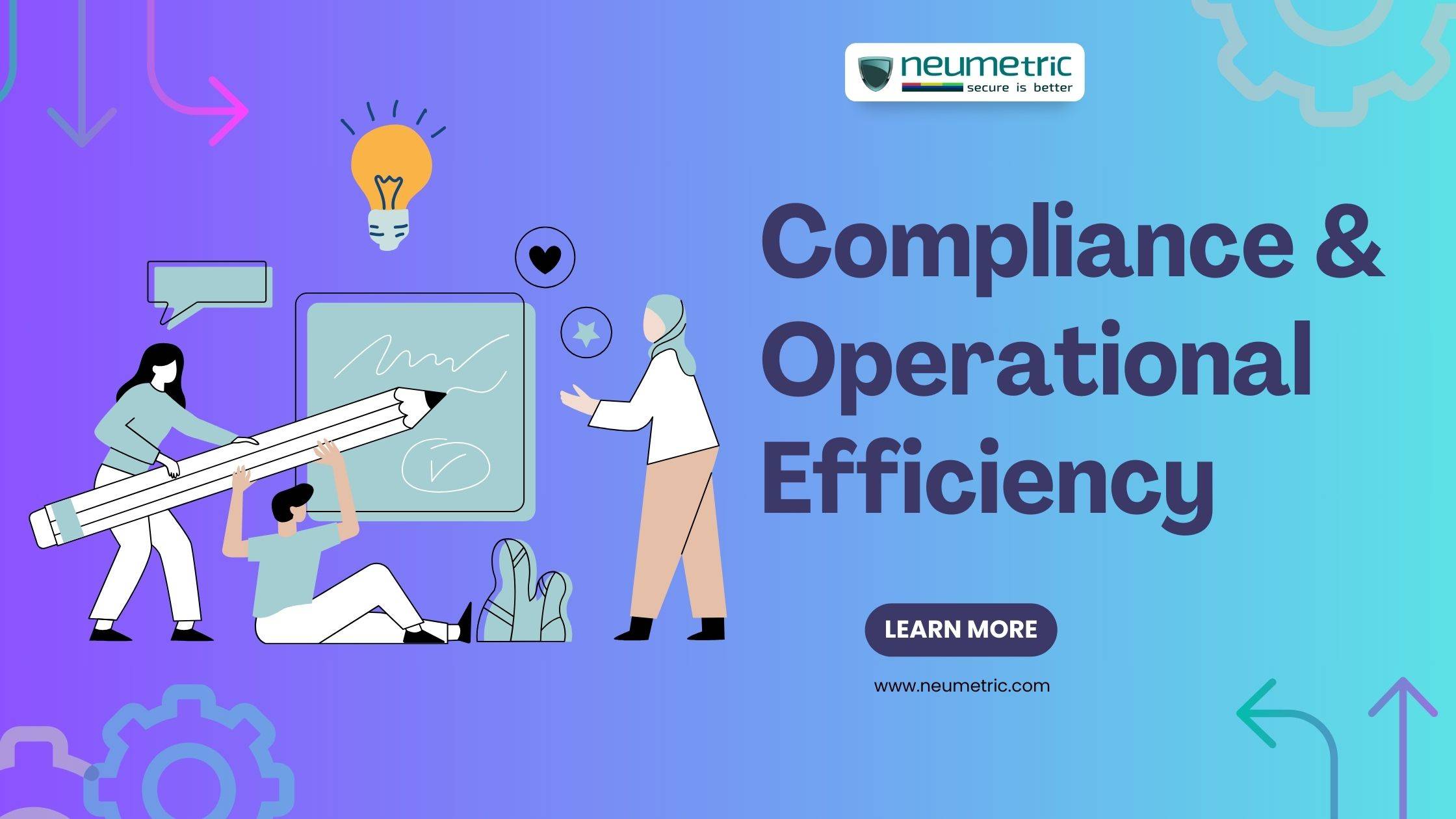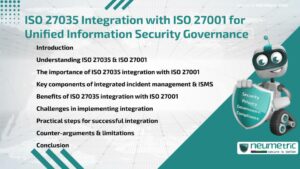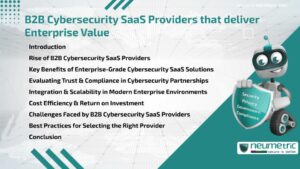Table of Contents
ToggleIntroduction
In the intricate dance of modern business, two crucial elements often take centre stage: Compliance & Operational Efficiency.
Compliance isn’t just about following rules & regulations; it’s the heartbeat that keeps businesses in sync with legal, industry & internal standards. It’s about playing by the book, adhering to laws & guidelines while staying true to the organisational ethos.
Operational efficiency, on the other hand, is the fuel that propels businesses forward. It’s about doing things smarter, faster & better. It’s finding the most effective & resourceful ways to run operations, whether it’s streamlining processes, optimising workflows, or leveraging technology.
Imagine running a tight ship where compliance dictates the rules & efficiency charts the course. But herein lies the delicate equilibrium: how do you maintain compliance without bogging down in bureaucratic red tape? How do you optimise operations without cutting corners that might compromise compliance?
Importance of Balancing Compliance & Operational Efficiency
It’s not a choice between one or the other; it’s the synergy between compliance & operational efficiency that births success. Compliance ensures ethical & legal operations, building trust among stakeholders & safeguarding the brand’s reputation. Meanwhile, operational efficiency drives productivity, cost savings & agility, enabling companies to innovate & adapt swiftly.
However, the conundrum arises when stringent compliance measures seem to hinder the agility needed for operational efficiency. Striking the right balance is paramount; it’s the sweet spot where adherence to rules doesn’t stifle innovation & efficiency doesn’t come at the cost of integrity.
This article dives deep into the art of harmonising these two seemingly divergent forces, exploring strategies, challenges & futuristic insights that can guide businesses towards a harmonious coexistence of compliance & operational efficiency.
Understanding Compliance
Defining & the Different Types of Compliance
Compliance is like the rulebook businesses must follow, but this book has multiple chapters. There’s regulatory compliance, those governmental guidelines that keep things in line, ensuring fairness, safety & ethical conduct. Then, there’s industry compliance, those specific rules within a sector that everyone in that space needs to play by—kind of like the unspoken codes among peers. & let’s not forget internal compliance, the house rules a company sets for itself to maintain its unique identity & standards.
The Significance in Today’s Business Environment
Think of compliance as the guardrails on a highway—without them, chaos ensues. In today’s world, where transparency & accountability are big deals, compliance is the beacon that guides businesses toward ethical conduct. It’s not just about avoiding fines or lawsuits; it’s about building trust with customers, investors & the community. Plus, it’s the cornerstone for a level playing field where everyone competes fair & square.
Challenges Associated with Achieving Compliance
Oh boy, achieving compliance isn’t a walk in the park. The rulebooks are vast, complex & ever-changing. Keeping up with these constantly evolving regulations feels a bit like chasing a moving target. Plus, each type of compliance brings its own set of challenges. Regulatory compliance often involves navigating through a maze of laws, sometimes contradictory, across different regions. Industry compliance demands staying ahead in a competitive field, adapting to new standards & technologies. & internal compliance? It’s like aligning everyone within a company to a common code of conduct amidst diverse roles & perspectives.
The real struggle lies in not just meeting these standards but doing so efficiently without hampering day-to-day operations or innovation. It’s like trying to build a skyscraper on a shaky foundation—finding that balance is the real game-changer.
Exploring Operational Efficiency
Defining Operational Efficiency & Its Components
Operational efficiency? It’s like the secret sauce that makes everything smoother in a business. It’s about doing things in the smartest, slickest & most effective way possible. Think of it as streamlining—the fewer hiccups, the better. It’s not just about speed; it’s about using resources wisely, minimising waste & maximising output. It involves optimising workflows, fine-tuning processes & embracing innovative tools or tech to get things done seamlessly.
The Role of Operational Efficiency in Business Success
Operational efficiency isn’t just a fancy term; it’s the backbone of successful businesses. When operations are finely tuned, it’s like the engine running smoothly in a high-performance car. It’s not just about saving time & money; it’s about being agile, adaptable & competitive. Efficient operations pave the way for innovation, better customer service & staying ahead in the game. It’s the difference between swimming against the current & riding the waves.
Key Metrics to Measure Operational Efficiency
Now, how do you measure this magic efficiency? There’s a whole toolbox of metrics for that. You’ve got your classics like productivity ratios, how much output you’re getting for the input. Then, there’s the cycle time—how fast it takes to complete a process from start to finish. Cost per unit, resource utilisation, error rates, customer satisfaction scores—they’re all pieces of the puzzle. & let’s not forget about the old favourite, the efficiency quotient, a simple way to see how well you’re using your resources to get stuff done.
These metrics aren’t just numbers; they tell stories. They uncover bottlenecks, highlight areas for improvement & guide strategies for making operations smoother, faster & more cost-effective.
The Intersection of Compliance & Operational Efficiency
Challenges of Balancing Compliance Requirements with Operational Efficiency Goals
Imagine walking a tightrope between two skyscrapers—one side, you’ve got compliance, demanding strict adherence to rules & on the other, operational efficiency, urging you to speed things up & cut down on the red tape. That’s the balancing act businesses face. Meeting compliance requirements often means adding layers of checks & processes, which can slow things down. On the flip side, focusing solely on efficiency might mean taking shortcuts that breach compliance. It’s like trying to juggle while tiptoeing on a rope—a real challenge to find that sweet spot where both compliance & efficiency meet.
How Compliance Impacts Operational Efficiency
Compliance is like a heavyweight boxer stepping into the efficiency ring. It can either be a formidable opponent or a powerful ally. Sometimes, compliance demands so much attention that it feels like trying to run a marathon with weights tied to your ankles. But here’s the twist—when done right, compliance can actually enhance efficiency. Clear guidelines & standardised processes can streamline operations, minimising errors & boosting productivity. It’s like having a roadmap that not only keeps you on the right track but also helps you navigate faster & smoother.
Examples Demonstrating the Relationship
Take Company X, for instance. When they revamped their compliance protocols to align with industry standards, it seemed like an added burden at first. But as they integrated these requirements into their operations, they discovered loopholes that were causing inefficiencies. By fixing those compliance-related gaps, they saw a significant increase in productivity & a reduction in costly errors.
Then there’s the story of Company Y, who focused solely on efficiency without giving much thought to compliance. They managed to speed things up, but in doing so, they overlooked certain regulatory aspects. When they faced penalties & had to backtrack to rectify these issues, their efficiency gains took a massive hit.
These examples underscore the intricate relationship between compliance & operational efficiency, showing that when these two work in tandem, businesses can achieve the best of both worlds.
Strategies for Achieving Compliance while Maintaining Operational Efficiency
Implementing Robust Compliance Frameworks without Sacrificing Efficiency
Picture this: building a sturdy fort without compromising on its agility. That’s what companies aiming for both compliance & efficiency need—robust frameworks that don’t weigh down operations. The key is integration. Instead of tacking on compliance measures as an afterthought, companies should weave them into the fabric of their processes. It’s about designing workflows where compliance is not an obstacle but an inherent part of how things are done. Think of it as building a car with safety features so well-integrated that they enhance, not hinder, the driving experience.
Leveraging Technology & Automation to Streamline Compliance Processes
Technology isn’t just the cherry on top; it’s the whole sundae when it comes to balancing compliance & efficiency. Automation tools can be your best pals here. They help in two ways: first, by reducing the manual workload, allowing teams to focus on more strategic tasks & second, by ensuring accuracy & consistency in compliance checks. It’s like having a diligent assistant who never forgets a task & does it lightning-fast. By leveraging these tech marvels, companies can navigate compliance waters swiftly & smoothly.
Training & Development Initiatives for Enhanced Efficiency in Compliance Practices
Imagine a team of superheroes equipped with the right skills & knowledge to tackle compliance challenges head-on. Training & development initiatives play a pivotal role in this scenario. It’s about empowering employees with the know-how, making compliance everyone’s business. By fostering a culture of compliance awareness & providing continuous learning opportunities, companies can transform their workforce into champions who not only understand the rules but also find innovative ways to uphold them efficiently. It’s like turning every team member into a compliance wizard who instinctively knows how to maintain the balance.
Tools & Technologies for Enhancing Compliance & Operational Efficiency
Software Solutions for Compliance Management
Imagine having a superhero tool belt packed with gadgets—software solutions for compliance management are a bit like that. These tools come in all shapes & sizes, from comprehensive platforms that handle multiple compliance areas to specialised software focusing on specific regulations. They’re like Swiss Army knives for compliance officers, helping organise, track & manage various compliance tasks. They centralise information, automate workflows & provide real-time insights, making it easier to stay on top of ever-evolving regulations.
AI & Machine Learning in Streamlining Compliance Processes
Now, let’s talk about the brainy stuff—AI & machine learning. It’s not just sci-fi; it’s a game-changer in the compliance world. These technologies are like the Sherlock Holmes of the business realm, sniffing out patterns, anomalies & potential risks within vast datasets. They can analyse tons of information in a blink, identifying trends & predicting compliance issues before they snowball. It’s like having a crystal ball that shows potential pitfalls before they become problems.
Examples of Successful Implementations
Take Company A, for instance. They implemented a comprehensive compliance software that not only streamlined their processes but also integrated AI algorithms. This combination helped them cut down manual review times by half, ensuring quicker responses to compliance issues & reducing the chances of errors.
Then there’s Company B, who utilised machine learning to sift through massive datasets for regulatory compliance. This not only saved them hours of manual labour but also improved accuracy, allowing them to proactively address compliance concerns.
These examples are just glimpses of how these tools & technologies have revolutionised the compliance game for businesses, enabling them to navigate complex regulations with more ease & precision.
Best Practices for Sustainable Compliance & Operational Efficiency
Continuous Monitoring & Adaptation of Compliance Measures
Picture this: sailing a ship through ever-changing seas. That’s what continuous monitoring in compliance feels like. It’s not a one-and-done deal; it’s about keeping a vigilant eye on the horizon, staying updated with new regulations & adapting measures accordingly. Think of it as a feedback loop—a constant cycle of assessing, tweaking & reassessing. By keeping a finger on the pulse, businesses can nip compliance issues in the bud & ensure their operations sail smoothly even in turbulent regulatory waters.
Importance of Collaboration & Communication Across Departments
Imagine a team rowing in sync towards a common goal—that’s what collaboration & communication across departments do for compliance & efficiency. Compliance isn’t just a checkbox for one team; it’s a collective effort. When legal, operations, IT & every other department are on the same page, magic happens. It’s about breaking down silos & fostering a culture where everyone understands the significance of compliance & how it ties into efficient operations. Clear communication ensures everyone knows their role & collaboration ensures a united front against compliance challenges.
Incorporating Feedback Loops for Continuous Improvement
Think of compliance & operational efficiency like a garden that needs constant tending—a feedback loop ensures it thrives. Encouraging feedback from all levels—employees, customers, stakeholders—is like having a set of fresh eyes to spot areas for improvement. It’s not just about fixing what’s broken; it’s about fine-tuning what’s already working. By incorporating feedback loops, businesses create a culture of continuous improvement, where every suggestion, every insight, fuels the engine of progress.
Conclusion
Imagine a tightrope walker gracefully navigating between two skyscrapers—that’s the balancing act businesses face. Compliance isn’t just about ticking boxes; it’s about ethical conduct, trust-building & playing fair. On the other hand, operational efficiency isn’t just about speed; it’s about agility, innovation & staying competitive. These two—compliance & efficiency—aren’t adversaries; they’re partners in the success story of any business. When they harmonise, it’s like hitting that sweet spot where operations run smoothly while integrity remains intact.
Achieving this harmony isn’t a one-time achievement; it’s an ongoing journey. It’s about nurturing a culture where compliance isn’t seen as a burden but as a compass guiding operations. It’s about weaving efficiency into the very fabric of compliance measures. & most importantly, it’s about fostering a mindset—a mindset where everyone, from top to bottom, understands the crucial role both compliance & efficiency play in the company’s success.
Long-term success doesn’t come from favouring one over the other but from finding that elusive equilibrium. It’s a delicate dance that requires constant adaptation, collaboration & a commitment to continuous improvement.
As we sign off, let’s remember that businesses can thrive not by choosing between compliance & efficiency but by embracing both, ensuring a strong foundation built on integrity & agility—an unstoppable combination for success in the ever-evolving business landscape.
FAQs
Why is compliance such a big deal for businesses & how does it relate to operational efficiency
Compliance isn’t just about following rules; it’s the backbone of ethical business conduct. It ensures fairness, safety & trust among stakeholders. Now, here’s the twist—operational efficiency & compliance are more like partners than adversaries. When they work together, operations run smoothly while integrity remains intact. It’s like having a well-oiled machine that’s not just fast but also reliable.
How can businesses balance compliance requirements without sacrificing operational efficiency?
Finding the balance between compliance & efficiency isn’t easy. It’s about integrating compliance measures into operations without creating roadblocks. Technology plays a big role here—tools & automation help streamline compliance processes. Also, fostering a culture where compliance is everyone’s business & keeping an eye on evolving regulations are crucial steps toward achieving this balance.
Why is continuous monitoring & collaboration so important for sustainable compliance & efficiency?
Think of compliance as a moving target—you need continuous monitoring to stay on track. Regulations change, business landscapes evolve & that’s where continuous adaptation comes in. Collaboration & communication across departments are like the glue that holds it all together. When teams row in sync towards common compliance goals, it ensures everyone’s on the same page & minimises risks.





